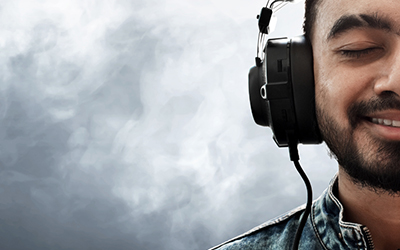Loyalty for Sale
“You know you’re paying too much!” my brother-in-law smirked at me, as I paid for the two suits I had just ordered. We had spent the last 45 minutes going through bolt after bolt of fabric at my tailor’s in New Delhi, India and had finally selected two weaves to be cut into a pair of three-piece suits.
Now, I have lived in Dubai for over half my life – and while I am not big on material trappings, I do like to dress sharp; especially for work. Besides, as someone who worked in Branding for over a decade – I am of the opinion that ‘packaging’ yourself to stand apart is a key aspect of how you position yourself… but that’s for another story.
So, every visit to India means a visit to my tailor, who happens to be the same tailor who cut my first ever suit jacket when I was a young lad of 15. Furkaan was an assistant cutter, back then and despite living in three different countries, having gained and shed several pounds (and all my hair), over the last three decades, he remains my go-to person for a custom, tailored suit. Admittedly, I have strayed a few times and, disappointed with each experience, find myself returning to him with a renewed sense of loyalty.
So if I’m so loyal and Furkaan such an amazing tailor; why did I try other options. Human nature, perhaps… seeking the new and (exciting) unknown. We will come back to this shortly.

Once I was given the opportunity to have a suit tailored, in Dubai and the experience was so incredibly bad that I swore never to go back. I walked into a beautiful shop and a very polite gentleman went through the motions – showing me various fabrics etc. etc. But the experience went downhill from there. I followed up on the day I was promised a fitting and every second day after and finally three weeks after being measured I was offered a ‘fitting’ – imagine my shock when I arrived at the appointed time, only to be told, “the driver was on his way with my suit”, and almost 50 minutes later, there was still no sign of it and the store manager was shuffling around avoiding eye contact. I left soon after, without having seen the suit. They called me back three days later.
On two other occasions I got carried away and bought off-the-shelf suits on sale… not a great idea when you have a body like mine.
Not only does Furkaan manage to get my fit absolutely spot on, every time; he remembers to send me a WhatsApp message on my birthday, every year… he does the same on Diwali, Christmas and New Years’ Day as well. Furkaan even asks after my children, like a proud ‘uncle’. When the season changes, he sends me swatches of fabric and even images of the latest styles.
I can order a suit via phone or on WhatsApp and Furkaan will cut, tailor and deliver it to my mother’s home, 15 miles (a 90 minute trip, one-way) without asking to be paid. There is an unspoken understanding between us offering me an indefinite credit line.
But this is not why I go back to him over and over, year after year.
A loyal customer sees the value you being to each and every interaction between yourselves and truly value the relationship you are keen to build with them.
Coming back to the suits I had just ordered – I had dropped six kilos over the first few months of the year, and therefore asked for my measurements to be taken again, following which Furkaan suggested a fitting, to make sure he got the fit right.
I had two days to leave and as I am sure, many of you will relate had neither the time nor the inclination to be stuck in traffic. I let him know I was happy to proceed without a fitting – but this gentleman takes a lot of pride in his work and wasn’t having any of it.
The next evening, at 7pm – his assistant came home with a basted version of my jackets, a fist full of pins and a piece of chalk. He spent a half hour with me, making little marks and opening stitches, where they appeared to be tight.
Twenty-four hours later I had my suits, looking beautiful and fitting like a glove.
Given the service I receive, how could I possibly switch tailors? Maybe I do pay a little extra, but all I need is to remind myself about our shared passion for excellence, the history we share and the service he offers – and I know there is no one else’s suits I could ever wear.
So here are my key takeaways from this story, every word of which is true.
Firstly, and most importantly, a customer who seeks discounts and savings – is not a loyal customer and never will be. He or she will go wherever is cheaper and a price-war is unwinnable. Don’t even try.
Instead, focus on understanding your customer and what creates value for them – often you will find creating value doesn’t cost much and your best customers are those who are not only happy to pay that little extra but more importantly will rave about you to their friends.
A loyal customer sees the value you bring to each and every interaction between yourselves and truly values the relationship you are keen to build with them.
So, ask yourself if you have a similar relationship with your customers? Are you able to codify your passion for your customers and empower your team with the appropriate processes to give customers a superlative experience; more importantly how do you infuse in them (your team) a passion to service a customer above and beyond what is expected and how do you reward them (your team) for their loyalty.
It is never enough to deliver the perfect product – yes I expect the suit to fit perfectly; but anyone with sufficient training can create a great suit and we are fast moving towards the possibility of AI enabled machines being able to do just that: so how do you create a bond with your customers, that keeps them coming back year-after-year, creating a bond that lasts a lifetime?
Loyalty as a human behaviour is predicated on emotion and balanced by rationality, so how do we remove cost from rational decision making and make it about affordability (Can you afford NOT to buy my product or service?); and make the emotional quotient about how your service creates convenience and value to make your customers’ experience feel truly unique and special.











